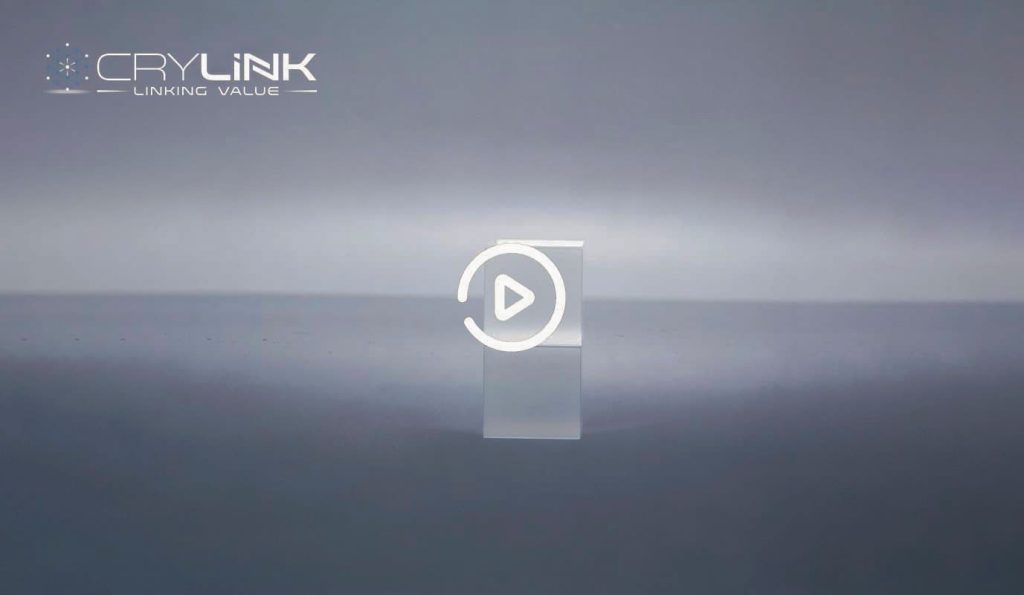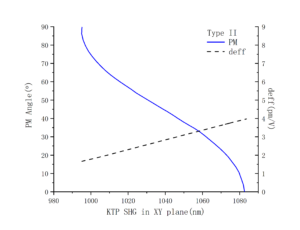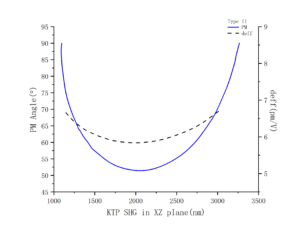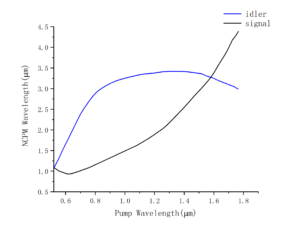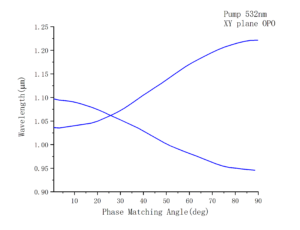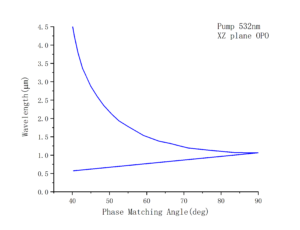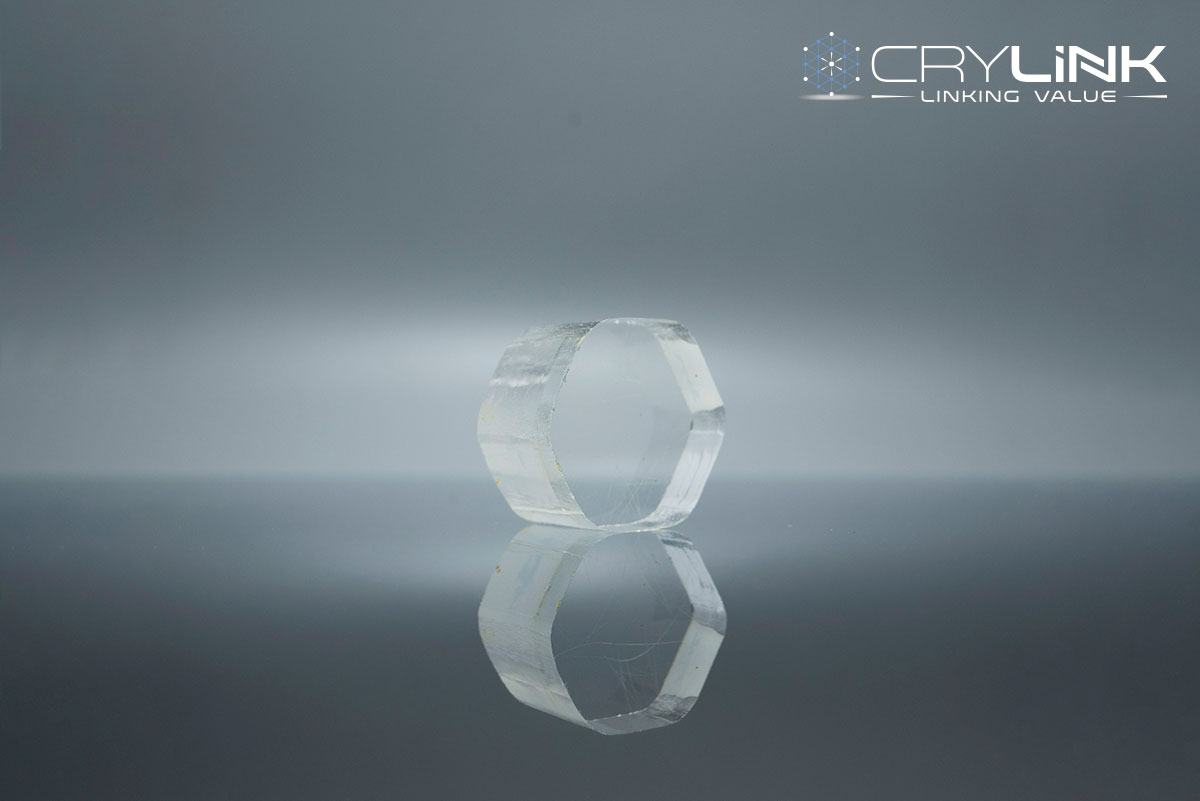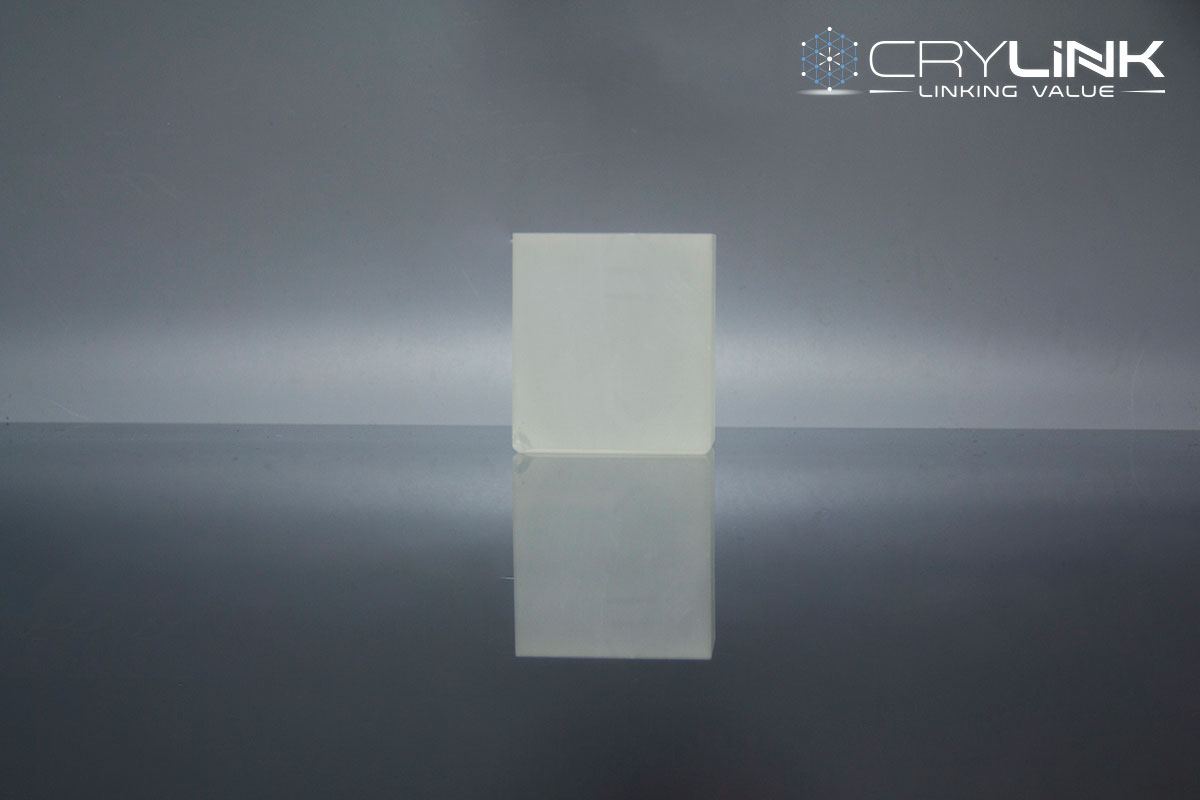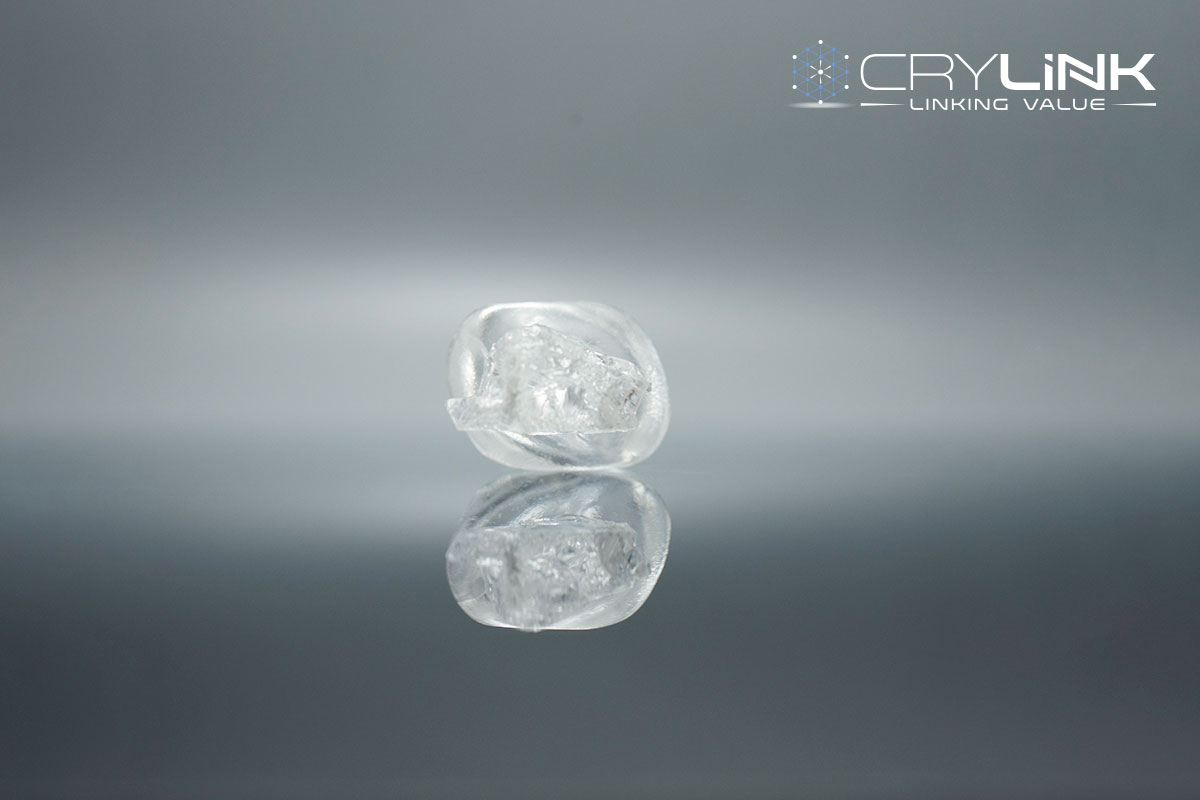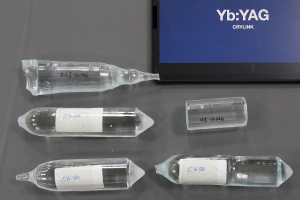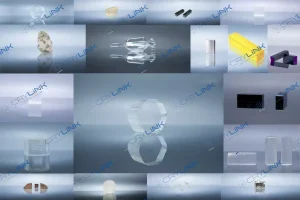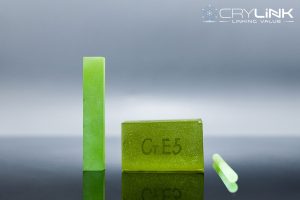KTP(Nonlinear Crystal)
KTiOPO4 (KTP Nonlinear Crystal) has the following characteristics:
- High nonlinear coefficient (about 15 times that of KDP)
- High thermal conductivity (twice that of BDN crystal)
- A wide range of allowable temperature matching and allowable angle matching
- High threshold of resistance to gray traces and light damage
- No moisture absorption and deliquescence
- No decomposition below 900°C
- Good mechanical properties
- Easy polishing of the crystal surface and small mismatch
Its frequency-doubling efficiency for 1064 nm can reach about 80%. KTP crystal can make components for frequency doubling, frequency mixing, electro-optical modulation, optical parametric oscillation, and optical waveguide.
KTP Crytstal For SHG: 1064nm to 532nm
GTR-KTP; Size: 3x3x7.2mm;
Coating: AR/AR@1064/532nm, R<0.2@1064nm,R<0.5@532nm;
Damage Threshold: >600MW/cm2, 1064nm, 10ns, 10Hz
KTP Crystal case (2)
Size: 15×15×1 mm;
Double side polished (15*15 mm)
532nm laser
Medical Applications:Evaluation of 532-nm KTP laser treatment efficacy on acne vulgaris
The 532-nm KTP laser is generated by using potassium titanium oxide phosphate (KTiOPO4) for frequency doubling of Nd:YAG laser radiation. This wavelength is appropriate for the treatment of superfi cial vascular and pigmented lesions and used for the treatment of both acne vulgaris and rosacea. For acne vulgaris, photoactivation of bacterial porphyrins, reduction of sebum production and collateral damage to sebaceous glands are the proposed mechanisms for its mode of action.
[Ref] Evaluation of 532-nm KTP laser treatment efficacy on acne vulgaris with once and twice weekly applications
Medical Applications:Application of potassium-titanyl-phosphate (KTP) laser in the excision of pyriform fossa hemangioma
Among lasers, the KTP-532 laser has several advantages that make it ideally suited for excision of hemangiomas. The potassium-titanyl-phosphate (KTP) laser has a wavelength in the visible light range (532 nm). It does not require an aiming beam and can be delivered via fiberoptic fibers. It is also preferentially absorbed by hemoglobin and, therefore, is effective in the treatment of vascular lesions. KTP-532 laser–assisted excision being a minimally invasive approach provides the advantage of minimal blood loss. The KTP-532 laser offers distinct advantages because it produces a zone of coagulation on either side of the incision, and as it cuts, it appears to seal the edges of the wounds. It is a quick, well-tolerated, minimally invasive procedure. An external incision and scar are avoided with this approach. It is a simple, safe, and effective surgical treatment with great potential in the future.
[Ref] Application of potassium-titanyl-phosphate (KTP) laser in the excision of pyriform fossa hemangioma
1 μm radiation of Nd lasers
modulators and Q-switches:KTiOPO4 (KTP) is a relatively new material that is widely used for frequency doubling the 1 μm radiation of Nd lasers.
Its high nonlinear optical d-coefficients, high optical damage threshold, wide acceptance angles and thermally stable phase matching properties make it useful for this purpose and, its large electrooptic r-coefficients and low dielectric constants make it attractive for various electrooptical applications such as modulators and Q-switches.
[Ref] Potassium Titanyl Phosphate (KTP):Properties, Recent Advances and New Applications
- High temperature resistance
- High thermal conductivity
- The mismatch is small
- The impedance ratio is large
- Broad band of light transmission
- Low temperature sensitivity
- Good mechanical properties
- Large nonlinear optical coefficient
- Chemical and mechanical properties are stable
- High photoelectric coefficient and low dielectric constant
| Attribute | Numerical |
| Chemical Formula | KTiOPO4 |
| Crystal Structure | Rhombic System, Space GroupPna21,Point Group mm2 |
| Lattice Constant | a=6.404Å, b=10.616Å, c=12.814Å, Z=8 |
| Melting Point | 1172°C |
| Mohs Hardness | 5 |
| Density | 3.01 g/cm3 |
| Thermal Conductivity | 13W/m/K |
| Coefficient of Thermal Expansion | ax=11×10-6/℃, ay=9×10-6/℃, az=0.6×10-6/℃ |
| Damage Threshold: [GW/cm ] | >0.5 @1064 nm,TEM00, 10ns,10HZ(AR-coated) |
| >0.3 @532 nm,TEM00, 10ns,10HZ(AR-coated) | |
| SHG Phase Matching Range | 497 ~ 1800nm (Type II) |
| Non-vanished Nonlinear Magnetization Coefficient | deff(II)≈(d24– d15)sin2φsin2θ- (d15sin2φ+ d24cos2φ)sinθ |
| d31=6.5 pm/V | |
| d24=7.6 pm/V | |
| d32= 5 pm/V | |
| d15=6.1 pm/V | |
| d33=13.7 pm/V | |
| Thermal Coefficient of Light | dnx/dT=1.1*10-5/℃ |
| dny/dT=1.3*10-5/℃ | |
| dnz/dT=1.6*10-5/℃ | |
| Nd:YAG Type of Laser II SHG@1064nm | Temperature Receiving: 24°C·cm |
| Spectrum Receive: 0.56nm·cm | |
| Angle to Receive: 14.2mrad·cm (φ); 55.3mrad·cm(θ) | |
| Discrete Angle: 0.55° |
| Transmission Range | 350~4500nm |
| Absorption Coefficient | <0.1%/cm @ 1064nm;<1%/cm @ 532nm |
| Refractive Index | nx=1.7377, ny=1.7453, nz=1.8297 @1064nm |
| nx=1.7780, ny=1.7886, nz=1.8887 @532nm | |
| Sellmeier Equation(λ in μm) | nx2=3.0065+0.03901/(λ2-0.04251)-0.01327λ2 |
| ny2=3.0333+0.04154/(λ2-0.04547)-0.01408λ2 | |
| nz2=3.3134+0.05694/(λ2-0.05658)-0.01682λ2 |

